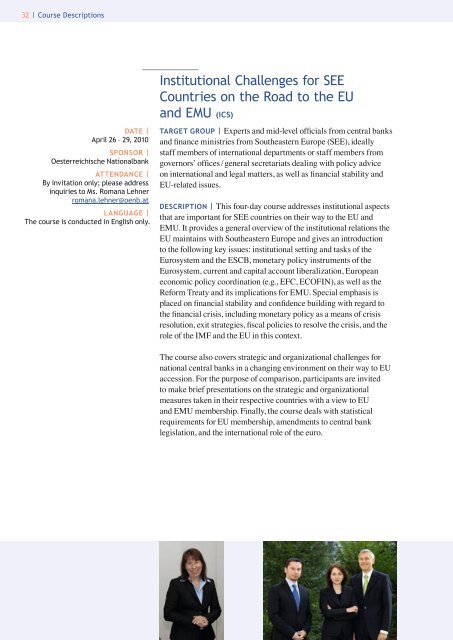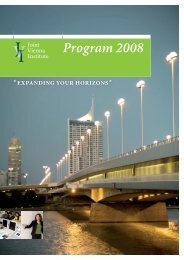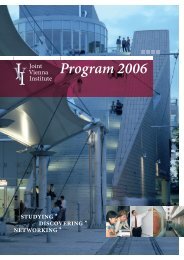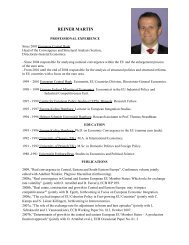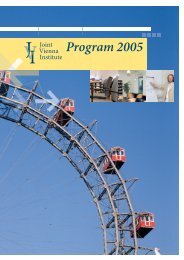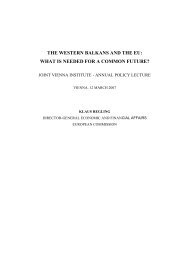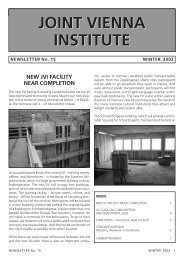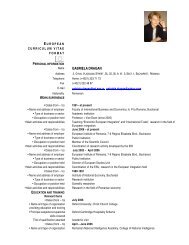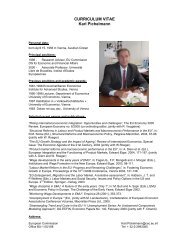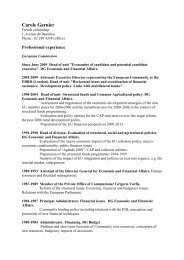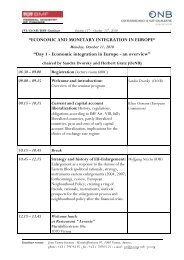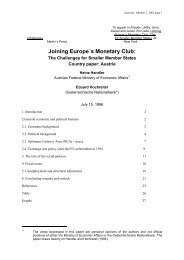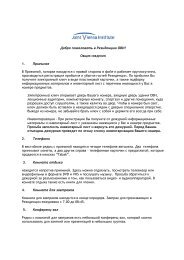Program 2010 - Joint Vienna Institute
Program 2010 - Joint Vienna Institute
Program 2010 - Joint Vienna Institute
- No tags were found...
Create successful ePaper yourself
Turn your PDF publications into a flip-book with our unique Google optimized e-Paper software.
32 | Course Descriptions<br />
Date |<br />
April 26 – 29, <strong>2010</strong><br />
Sponsor |<br />
Oesterreichische Nationalbank<br />
Attendance |<br />
By invitation only; please address<br />
inquiries to Ms. Romana Lehner<br />
romana.lehner@oenb.at<br />
Language |<br />
The course is conducted in English only.<br />
Institutional Challenges for SEE<br />
Countries on the Road to the EU<br />
and EMU (ICS)<br />
Target group | Experts and mid-level officials from central banks<br />
and finance ministries from Southeastern Europe (SEE), ideally<br />
staff members of international departments or staff members from<br />
governors’ offices / general secretariats dealing with policy advice<br />
on international and legal matters, as well as financial stability and<br />
EU-related issues.<br />
description | This four-day course addresses institutional aspects<br />
that are important for SEE countries on their way to the EU and<br />
EMU. It provides a general overview of the institutional relations the<br />
EU maintains with Southeastern Europe and gives an introduction<br />
to the following key issues: institutional setting and tasks of the<br />
Eurosystem and the ESCB, monetary policy instruments of the<br />
Eurosystem, current and capital account liberalization, European<br />
economic policy coordination (e.g., EFC, ECOFIN), as well as the<br />
Reform Treaty and its implications for EMU. Special emphasis is<br />
placed on financial stability and confidence building with regard to<br />
the financial crisis, including monetary policy as a means of crisis<br />
resolution, exit strategies, fiscal policies to resolve the crisis, and the<br />
role of the IMF and the EU in this context.<br />
The course also covers strategic and organizational challenges for<br />
national central banks in a changing environment on their way to EU<br />
accession. For the purpose of comparison, participants are invited<br />
to make brief presentations on the strategic and organizational<br />
measures taken in their respective countries with a view to EU<br />
and EMU membership. Finally, the course deals with statistical<br />
requirements for EU membership, amendments to central bank<br />
legislation, and the international role of the euro.


